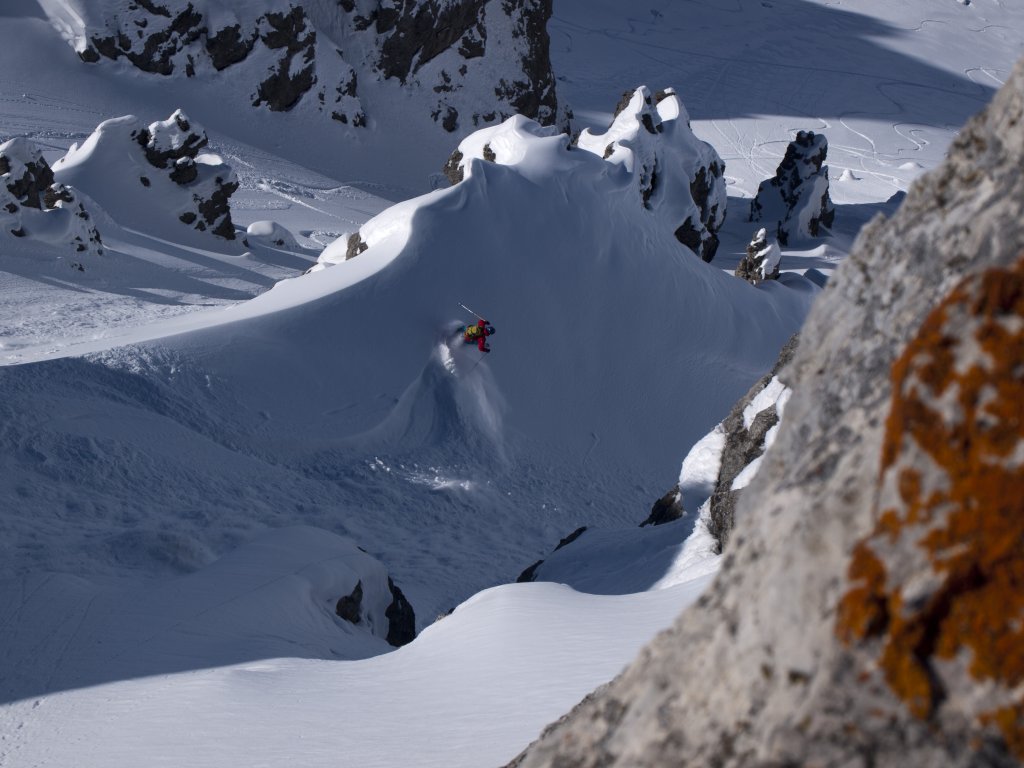Der gesamte Alpenraum konnte während der letzten Woche bei Sonnenschein und stabilen Verhältnissen traumhaftes Strahlungswetter genießen. Wenn man bei einer Aufstiegsatempause oder beim Cappuccino auf der Sonnenterasse verträumt ins Tal schaute, war dort oft braun-gelber Dunst oder gar eine tief liegende Wolkenschicht zu sehen.
Bei andauerndem Hochdruckeinfluss kommt es zu großräumigem Absinken von Luftmassen. Relativ warme Luft lagert dann auf kälterer, bodennaher Luft, die sich bei stabilem Wetter dank nächtlicher Abstrahlung bildet und im Winter oft wie ein See in Talkesseln liegt. Da die Sonne im Winter großteils zu schwach ist, um thermische Hebungsprozesse zu verursachen, bleibt die kalte Luft am Boden liegen, ohne dass sie sich mit der Luft darüber mischt. So sammelt die Luft im Tal immer mehr Abgase und Feinstaub und erscheint von oben gesehen gelb.
Strahlungsnebel
Im Flachland bildet sich bei solchen Wetterlagen häufig hartnäckiger Hochnebel, der über lange Zeit erhalten bleibt. Die in der Luft enthaltene Feuchtigkeit kondensiert an der Temperaturinversion und bildet Hochnebel. Besonders anfällig sind beispielsweise der Wiener Becken oder das Schweizer Mittelland. Befinden sich dank Industrie und sonstigen Feinstaubquellen viele Kondensationskeime in der Luft, kann es aus dem Nebel leicht schneien oder regnen. In Gebirgstälern, wie etwa dem Inntal, tritt Hochnebel im Winter ebenfalls auf, allerdings löst er sich hier oft auf Grund einsetzender Hangwindzirkulation im Tagesverlauf auf.
Hochnebelprognose
Diese Art von abgehobenem Strahlungsnebel ist schwer vorherzusagen, da die Modelle die klassischen Winterinversionen nicht auflösen, beziehungsweise meist der Ansicht sind, dass die Inversion bis fast auf den Boden absinkt. Die Nebelobergrenze befindet sich an der Schichtgrenze der warmen und kalten Luft. Wo diese genau liegt, kann man zum Beispiel in Radiosondenaufstiegen sehen, die Obergrenze kann daher recht genau angegeben werden. Je stärker der Hochdruckeinfluss und damit das Absinken, desto tiefer liegt de Hochnebel. Sind keine topographiebedingten Windsysteme im Spiel, löst sich Hochnebel meist erst auf, wenn sich die Wetterlage ändert und zum Beispiel Föhn aufkommt, der die kalte Luft am Boden wegbläst, wie aktuell der Fall.
Hochnebelartige Bewölkung
Einigermaßen vorhersagbar (mit gut aufgelösten CAPE Karten) ist hingegen flache Konvektion, die nach oben gedeckelt ist und ebenfalls Wolken produziert. In der Wettervorhersage wird dann meist von einer „hochnebelartigen Wolkendecke“ gesprochen. Die Wolken sind dann, anders als bei „echtem“ Hochnebel türmchenförmiger und bilden keine ganz so gleichförmige Schicht, außerdem liegt die Obergrenze oft höher.
Wetteraussichten
Und wie geht es mit dem Wetter weiter? Die Kaltluftseen in den Tälern dürften dank starkem Föhn mittlerweile überall ausgeräumt sein. Während es im Süden eher unergiebig schneit, kommt im Norden wohl kaum was an und es bleibt zumindest bis Anfang kommender Woche mild, bei allgemein wechselhaftem Wetter. Nächste Woche besteht zumindest temperaturmäßig Potential für eine eindrucksvolle Rückkehr des Winters.






